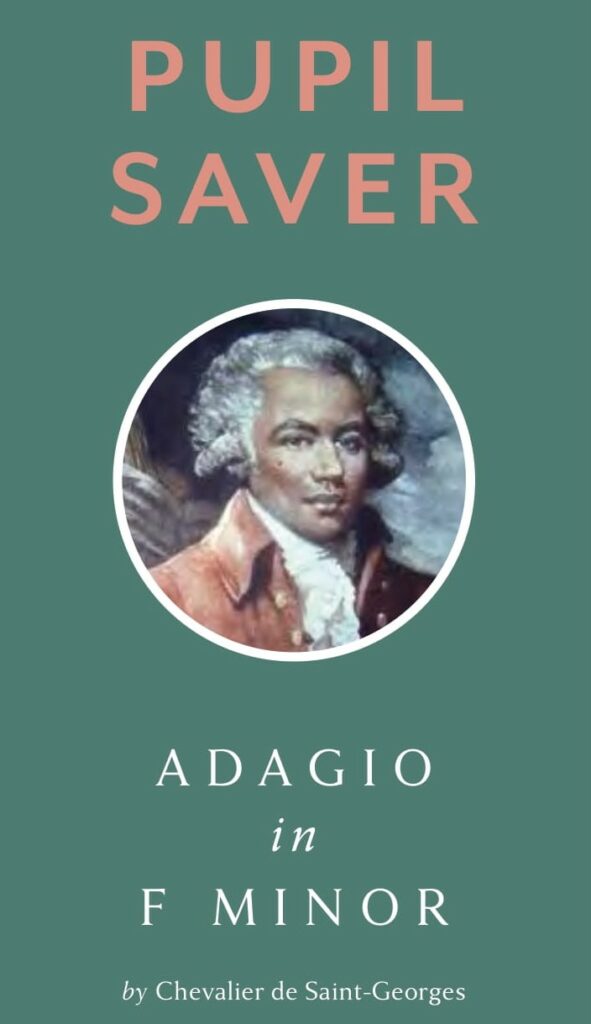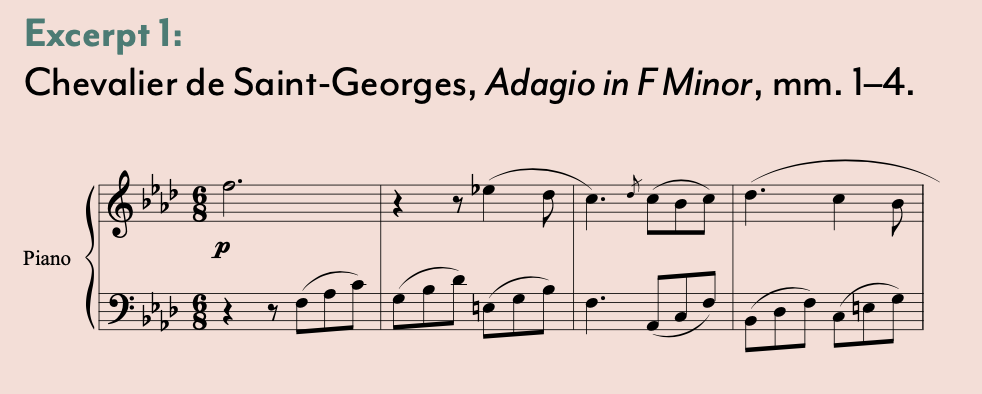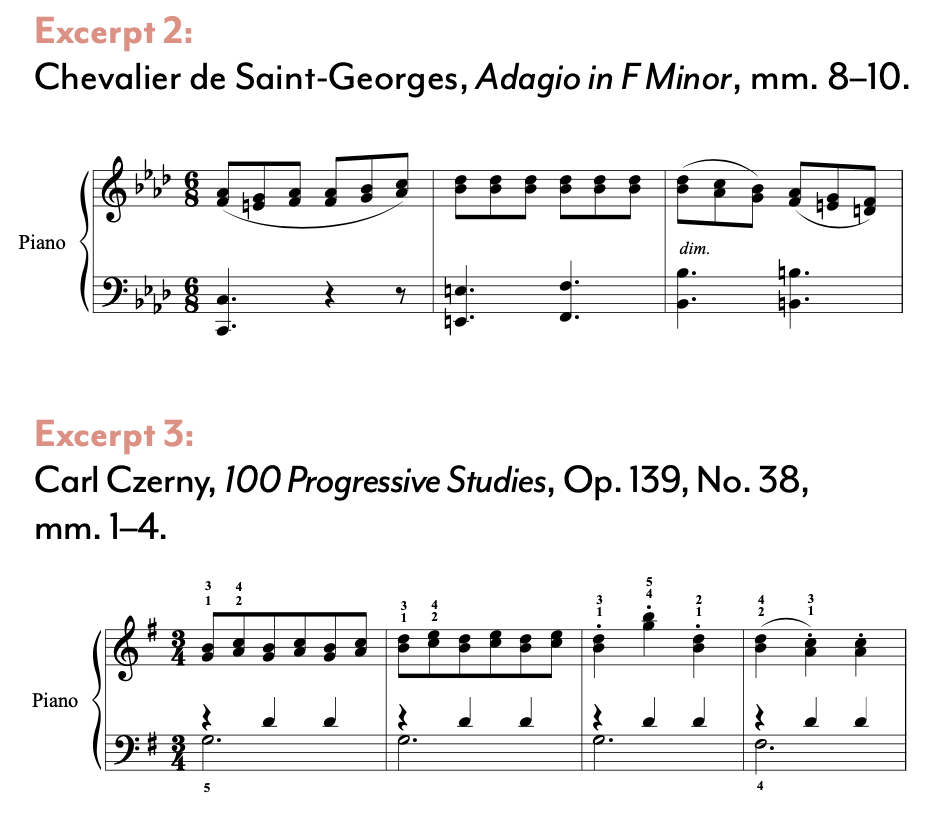We would like to thank Leah Claiborne for this insightful article on Chevalier de Saint-Georges’s Adagio in F Minor. Want to learn more about Black composers? Check out our latest publication of Thomas Henderson Kerr Jr.’s Didn’t My Lord Deliver Daniel? for two pianos! This publication, spearheaded by Susanna Garcia and William Chapman Nyaho, is the first in a series of three publications of Kerr’s piano works by the Frances Clark Center. Learn more and order a copy here.


Can you imagine performing a piece by a Black composer who was born into slavery? What a piece of history you would have at your fingertips!
Chevalier de Saint-Georges (1745–1799) was a virtuoso violinist, conductor, and composer. Born in Guadeloupe, his father was a wealthy plantation owner and his mother was enslaved on the plantation. His father took him to Paris, France when he was seven years old to further his education. He became a leading concertmaster in Paris, performing his own violin concerti, and concerti that were dedicated to him by other leading composers of the time. Some of these composers include Antonio Lolli and Carl Stamitz. Chevalier de Saint-Georges composed operas, solo vocal and instrumental works, chamber music, and symphonies. All of the music that this composer created is hardly ever performed, but that can change right now by incorporating Adagio in F Minor into your repertoire.
Adagio in F Minor is a solemn, expressive piece that would be a wonderful predecessor before a student tackles Clementi sonatinas. It can be challenging for teachers to find music that bridges the gap between method book repertoire and sonatinas, as well as the transition from sonatinas to sonatas. Adagio in F Minor fits perfectly into an early-intermediate pianist’s studies. This piano piece in F minor features a melancholic melody with expressive harmonic support (see Excerpt 1). The musical maturity needed for this piece often makes this a favorite amongst intermediate adult students as well.

CHALLENGE #1
The student is asked to perform scale passages in thirds in the right hand (see Excerpt 2). The thirds in Adagio in F Minor are beautifully intertwined with the melody and should be voiced to the top note. A similar example of right-hand thirds being used as the melody in the teaching repertoire is found in Czerny’s 100 Progressive Studies, Op. 139, No. 38 in G major, which can be a great companion etude when a student is learning this piece (see Excerpt 3).

Excerpt 3: Carl Czerny, 100 Progressive Studies, Op. 139, No. 38, mm. 1-4.
We hope you enjoyed this excerpt from Leah Claibornes’s article “Spring 2021: Pupil Saver: Adagio in F Minor by Chevalier de Saint-Georges.” You can read more by clicking here.
MORE ON DIVERSITY, EQUITY, AND INCLUSION
- MAGAZINE ARTICLE: Spring 2021: Pupil Saver: Adagio in F Minor by Chevalier de Saint-Georges by Leah Claiborne
- MAGAZINE ARTICLE: Remaking Ourselves and the Standard Canon: Perspectives and Resources for Promoting Diversity, Equity, and Inclusion in Classical Music by Nicholas Reynolds
- COURSE: Piano Teaching through the Lens of Diversity, Equity, and Inclusion
- COURSE: Unsung Heroes in Piano Pedagogy: 20 Pieces by Black Composers to Use in Your Studio Now
- MAGAZINE ARTICLE: Awadagin Pratt: Pianist, Conductor, Music Education Advocate by Artina McCain
- WEBINAR: Introduction to the Frances Clark Center’s New Online Course: Piano Teaching through the Lens of Diversity, Equity, and Inclusion with Leah Claiborne, Susanna Garcia, and Artina McCain
- WEBINAR: Piano Music by Black Composers: Music for all Skill Levels with Leah Claiborne
- WEBINAR: Diversity in Music with Leah Claiborne, Leonard Hayes, Artina McCain, Desireé González-Miller, and William Chapman Nyaho
- WEBINAR: Best Piano Pedagogy Practices through the Lens of Diversity, Equity, and Inclusion with Leah Claiborne and Artina McCain